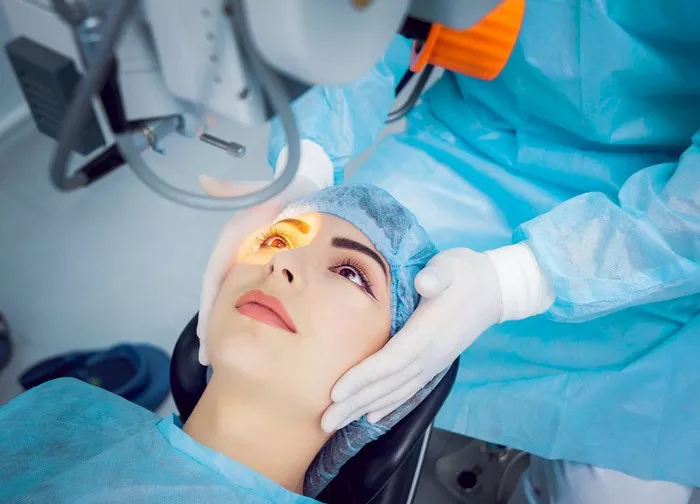If you’re considering laser eye surgery to bid farewell to glasses and contacts, LASIK might not be your only option. SMILE eye surgery, a potential alternative, has gained attention as a comparable and, for some, a preferable choice. Ophthalmologist William Dupps, MD, PhD, sheds light on the differences between LASIK and SMILE and explores which might be the better fit for individuals seeking vision correction.
LASIK, which stands for Laser-Assisted In Situ Keratomileusis, has a longer history, while SMILE, an acronym for Small-Incision Lenticular Extraction, represents an evolving approach to laser eye surgery. Both aim to correct refractive errors, the leading causes of blurry vision, by reshaping the cornea using a laser.
During LASIK, a surgeon creates a flap on the cornea’s surface, folds it back, reshapes the cornea with a laser, and then repositions the flap for healing. In contrast, SMILE involves removing a small corneal tissue piece, known as a lenticule, without creating a flap, changing the cornea’s curvature to enhance vision.
Advantages of LASIK include extensive FDA approval, with over 20 million eyes treated, and a high success rate in correcting nearsightedness, farsightedness, and astigmatism. However, about 20% of individuals may not qualify for LASIK due to extreme vision issues or dry eyes, a common side effect.
SMILE, a less invasive procedure, cuts fewer nerves near the eye’s surface, potentially reducing dry eye issues. It can be an option for those ineligible for LASIK, such as individuals with dry eyes or higher prescriptions, and may be preferable for active individuals due to lower chances of complications.
While LASIK has a more extended research history, SMILE has gained popularity since 2009, particularly in Asia, with approximately 5 million procedures performed worldwide. Research suggests that SMILE is as effective as LASIK, with studies indicating positive outcomes for nearsightedness and astigmatism but excluding farsighted prescriptions.
Choosing between LASIK and SMILE depends on individual factors. LASIK is suitable for farsightedness, while SMILE may be preferable for those with dry eyes. Consulting with an ophthalmologist is crucial, considering stability in prescription, overall health, and specific eye conditions.
Ultimately, the decision between LASIK and SMILE is a personalized one. If you’re ready to reduce reliance on glasses and contacts, consulting with an ophthalmologist can help determine candidacy and the most suitable laser vision correction option for you.


